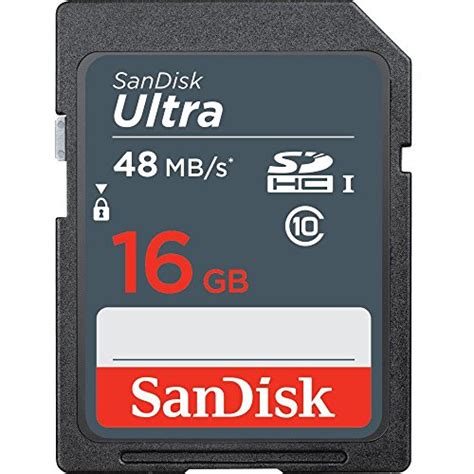
If you are in need of a service dog, you may be wondering what your options are besides just purchasing a trained dog; purchasing a trained dog can be incredibly expensive, especially if you don’t have access to any financial assistance. Training your own service dog is a valid alternative that, while costly on time, is not as expensive.
In this article, will be discussing some important considerations that you need to think about when it comes to training your own service dog. We’ll also be giving you some tips on how to start basic training with your dog and answering some important frequently asked questions about service dogs. Read on to find out everything you need to know!
A service dog is any dog who has been trained to perform a specific set of tasks that help make an individual’s life easier or improve the quality of life for a disabled individual. This can include opening doors and picking up items, guiding those with vision impairments, and preventing an individual from harming themselves.
Some service dogs can even be trained to sense medical conditions ahead of time, such as seizures, low blood pressure, or blood sugar fluctuations, and can alert their owner to take the necessary steps.
An emotional support dog differs from a service dog in the fact that they are not trained to perform specific tasks. They may help their owner get through periods of anxiety or depression, and provide general comfort, but they do not have specialized training that enables them to help their owner by guiding, assisting, or retrieving items.
Emotional support dogs are not afforded the same essential permissions that service dogs are allowed in public, such as entering buildings, stores, and restaurants, and may be banned from certain areas that ban dogs as a general rule. You can read more about these differences here.
These considerations are important to keep in mind if you are seriously thinking about training your own service dog.
Dog breed isn’t everything when it comes to a service dog, but you should keep in mind that certain breeds may be able to perform tasks with more skill.
For instance, a Golden Retriever or a Labrador dog is much more suited to guiding and picking up items because of their size; if you need assistance that requires opening doors, moving items, and physical support, a larger sized dog is better and will have more strength for these activities.
Traditionally, service dogs are selected from one of the following breeds, but others may be acceptable:
As we mentioned above, dog breed is important, but it isn’t everything. When selecting a dog to train, you should take into account what type of tasks you will need help with. A larger dog breed is better suited for tasks that require strength and size, such as opening doors and cabinets and physically supporting your person.
A smaller dog breed can be useful if you need help with guidance when walking, medical condition detection, or carrying smaller objects.
Before adopting a dog or deciding to train your current dog, write down a complete list of all the tasks that you would like your service animal to help you with. From there, you can evaluate the size and strength needed for each task and select the best-suited dog breed for your needs.
No matter what type of dog breed you are planning to train, your dog’s temperament must match that of a service dog. Your dog should be calm, confident, intelligent, and highly motivated. They should also be social, but not so social that they will forget their service duties when surrounded by people.
Any dog that you are trying to train should be non-reactive and non-aggressive. It will be difficult to get a service dog to help you if they are easily threatened by strangers, new sounds and movements in their environment, or lack the ability to learn complex tasks.
If you are unsure about your dog’s temperament, you can look into temperament testing to give you a better idea of what your dog can and cannot handle.
Currently, the Americans with Disabilities Act (the ADA), does not have any specific legal training requirements set out that service dogs need to meet. That being said, your service dog will need to be fully under your control at all times, maintain focus on their work, and provide you with assistance during your day-to-day life in order to be legally protected as a service dog.
And while these aren’t legal requirements, it is important to make sure that your dog is neutered or spayed (to reduce aggression), that they are kept up-to-date on all vaccinations, and that they are in overall good health (medical conditions like arthritis and diabetes make it hard for dogs to perform service tasks accurately) before training them as a service dog.
One of the biggest aspects that puts people off of training their own service dog is how much of a time commitment it really is. While there are no legal training requirements that you need to meet, it is widely accepted that it will take at least 120 hours of training over at least 6 months to teach your dog necessary service skills and an additional 30 hours of practice in public.
More or less time may be required depending on the individual skills you are trying to teach the dog and how fast your dog learns. The training will need to be given in a consistent way day after day to reinforce concepts, which can be difficult for those who do not have a lot of energy or free time; if you want to train your own dog, you will need lots of patience and to dedicate time each day for helping your dog learn new skills.
Below, we list the best ways to start training your service dog. Training will need to start with fundamentals and commands that help you keep control over your dog, and then you can build up to more complex service skills.
Obedience commands are part of the fundamental skills that you want to instill in your dog. These skills include tasks such as “sit,” “stay,” “come,” and “wait.”
It is important for your dog to learn these tasks first as they will introduce them to the world of service dog training and allow you to exercise more control over your dog as you build up to more complex skills.
You can start training basic commands by using the following strategies:
To teach sit:
Repeat these steps a few times each day until your dog can recognize your verbal command and will sit even without being shown a treat first.
To teach your dog to come to you:
Repeat this several times a day, moving further and further away until you reach the point where they respond to your verbal command and will come to your side no matter the distraction.
When teaching your dog to stay, it is more helpful if they already know how to sit on command. For this skill:
Continue to repeat this skill a few times each day, every time moving further away from your dog. Make sure to reward your dog for staying every time they do, even if you only take a few steps away, as this will lead to better reinforcement of the skill.
If you are more of a visual learner when it comes to teaching your dog skills, there are several videos available, like this one, that can help you gain a better understanding and introduce new techniques for training basic commands.
Clicker training is especially helpful when it comes to building up your dog’s range of skills. It can be used to help your dog understand more complex tasks and is a simple way to build on the skills that your dog already knows.
To train with a clicker, you will need to purchase a solid, sturdy pet clicker, like this one. The click sound is used to indicate “yes” or “good” to your dog and should be used at first in tandem with a reward (such as a treat). Eventually, you will get to the point that you can go without treats and just use the sound of the clicker to train your dog.
Just like with basic command training, there are several videos available to help you start clicker training your dog. You may also be able to find articles that can help you understand how to teach specific skills with a clicker, such as behavior chains or retrieving items.
It is possible to train disability-specific tasks, such as guiding the visually impaired or sensing low blood sugar, to your dog. However, these are much more complex tasks and may be more difficult to achieve at home.
When it comes to tasks like sensing medical conditions, guiding their owners, or using their strength to support a person, you may need to consult a professional trainer to give you some pointers about how to achieve these skills with your dog.
Each dog and owner is different, so it will take research and reaching out to professionals on your part to learn what is needed to train your dog in highly disability-specific tasks.
The answers to these frequently asked questions about training service dogs can help put any lingering worries to rest.
While many owners may think it is necessary, you actually don’t have to train your service dog from a puppy. It may be easier to train a younger dog, as they typically learn faster, but you can just as well train a dog that you’ve owned for years or that is a few years old when you adopt them; it may just take a little bit more patience and more dedicated teaching time.
After you have trained your service dog, you are not required to register it in any way. You can, however, purchase a vest for your service dog that will indicate to others that your dog is working and will make it easier for you to enter and exit areas, taking advantage of the protections granted to you by the ADA.
There are several different resources out there that can help you train your own service dog. These range from books, to videos and articles that will provide you with all the training tips and tricks you need to know to teach your dog new service skills.
Additionally, there may be local or national organizations that can help you with free training lessons as you get started training your own dog, or can help you secure funding to hire a personal dog trainer to help teach more advanced service skills.
Purchasing a trained service dog is expensive, which is why many individuals opt to train their own dog. However, there may still be some expenses associated with training your own service dog.
For instance, if you need more specialized tasks taught to your dog, you might need to consult with a personal trainer. A personal dog trainer will cost anywhere between $150 and $250 an hour. If you wish the personal trainer to assist you every step of the way of training (around 120 practice hours), you may end up paying between $10,000 and $30,000 to train your dog.
You may also want to purchase a specific breed of dog, which can cost anywhere from $50 to over $1000, depending on the breed you are buying and whether or not you use a rescue organization to adopt your dog.
You can keep costs down when training your service dog by only seeing a professional trainer when absolutely necessary and working hard to teach your dogs all essential skills yourself, using books, videos, and instructional articles as a guide.
There are some cases in which it is necessary to consult a professional about training your dog. This is most common when you need your dog to learn a highly specialized, important skill such as medical alerting, blood sugar detection, or guiding a visually impaired owner.
You may also want to speak with a professional dog trainer if you are overwhelmed when teaching your dog new skills, unsure about how to teach a specific essential task, or need general guidance when it comes to training your dog.
Training your own service dog can be a difficult task, but with a lot of research on methodology and patient training sessions, it can be done. If you’ve decided to train your own service dog, make sure that you have a good understanding of which tasks you need your dog to help you with and acknowledge that you will need to start with the basics and build up your dog’s skill.
Training your own service dog takes a lot of time, but for those who can’t purchase a service dog or who would rather build a working relationship with their dog through extensive training, it can be a fantastic option that will eventually help improve the ease of your day to day life.
 Smead 100 Recycled Pressboard Classification File Folder 1 Divider 2quot Expan
Smead 100 Recycled Pressboard Classification File Folder 1 Divider 2quot Expan
 Classic Accessories Veranda Water Resistant 11 Foot Patio Umbrella Cover
Classic Accessories Veranda Water Resistant 11 Foot Patio Umbrella Cover
 Sandisk 16 Gb Class 10 Sd Hc Ultra Flash Memory Card 10 Pack Bundle With
Sandisk 16 Gb Class 10 Sd Hc Ultra Flash Memory Card 10 Pack Bundle With
 Fairwin Braided Leather Dog Training Leash 6 Foot 56 Foot Military Grade H
Fairwin Braided Leather Dog Training Leash 6 Foot 56 Foot Military Grade H
 3m Reflective Dog Leash 5ft Long With Traffic Padded Handle Dog Training Leas
3m Reflective Dog Leash 5ft Long With Traffic Padded Handle Dog Training Leas
 How To Be Your Dogs Best Friend The Classic Training Manual For Dog Owners
How To Be Your Dogs Best Friend The Classic Training Manual For Dog Owners
 Classical Naptime For Tots
Classical Naptime For Tots
 Doggie Stylz Set Of 2 Reflective Therapy Dog In Training Removable Patches Wit
Doggie Stylz Set Of 2 Reflective Therapy Dog In Training Removable Patches Wit
 6 Pcs Service Dog In Trainingworkingstress Amp Anxiety Response Embroidere
6 Pcs Service Dog In Trainingworkingstress Amp Anxiety Response Embroidere
 Service Dog In Training Patch With Hook Back And Reflective Lettering For Servic
Service Dog In Training Patch With Hook Back And Reflective Lettering For Servic
 Four Paws Wee Wee Pee Pads For Dogs And Puppies Training L Gigantic Xl St
Four Paws Wee Wee Pee Pads For Dogs And Puppies Training L Gigantic Xl St
 Pny 128gb Elite X Class 10 U3 V30 Microsdxc Flash Memory Card 100mbs
Pny 128gb Elite X Class 10 U3 V30 Microsdxc Flash Memory Card 100mbs














